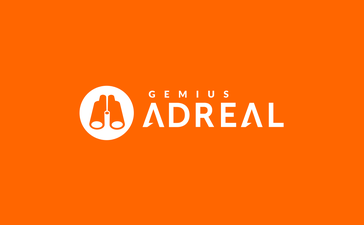
Who is the internet user?
Unlike television, press, radio and outdoor advertising, the internet offers a possibility to delve deep into the characteristics of the audience and the manner in which they utilize the media. Reliable and accurate data on these areas are the main focus of online publishers, advertising agencies, media houses or media analysts. Without the proper indicators that deliver the required information, it becomes far more difficult to sell ad space or effectively plan online marketing campaigns.
Insight into users means more informed decisions
The methodology gemiusAudience employs is based on a number of indicators which play a crucial role in everyday work for many professionals. For instance, the results it brings may be used to establish the number of people who have a defined set of socio-demographic traits (such as the age, sex and education) and visited a researched website. So, what questions can gemiusAudience answer?
Counting website visitors
In order to assess the amount of people who have visited, at least once, a website of interest within a month, many analyses refer to the notion of “unique users” (UU). Yet, such method may lead to misrepresentation, as the same internet user gets counted each time they visit a website after deleting the cookies or on a different browser. This renders reliable assessment of the factual number of users reached by a message impossible. This flaw is not to be found in the indicator called “real users”. This is because it also takes into account other popular factors that may potentially disrupt the results, e.g. shared use of one machine by several persons or multiple screen browsing. In consideration of the above, Gemius opts for real users metric in its analysis.
Online content sought by internet users
The interest that a website enjoys in a given month is illustrated by the so-called “reach”. It may be expressed as an absolute number of individuals (real users) or as a percentage share. In the latter case, the indicator will tell you what was the ratio of users who visited the analysed website in the given month to users who visited the Internet in the given month. The reach can also be described in the number of page views (PV), i.e. the amount of visits paid to the website in question within the analysed month. When interpreting this indicator, one must bear in mind that it concerns the entirety of internet users in the country, not the whole population.
Who is a researched website user?
The popularity of a particular website with a specified target group, i.e. internet users who meet a set of required socio-demographic characteristics, is illustrated by the so-called “audience composition”. If the value of that indicator is, say, 75 per cent, that would mean that three quarters of all the internet users who have visited the website fall in the expected profile, e.g. female or individuals aged 55 plus. This metric also allows you to measure the amount of time spent by users of the required characteristics on a website and the number of page views they make compared to all internet audience visiting the researched website.
What other websites do they visit?
Audience duplication provides information on the percentage of users at a given website who also visit other chosen site in a given month. High audience duplication for websites X and Y shows that a considerable share of persons who browsed the contents of X also went to website Y. By selecting websites with the lowest results, you can maximize the reach of a marketing campaign. Some interesting conclusions can be drawn by comparing the audience duplication data of particular websites for selected target groups.
Where’s my target group at?
There’s also an indicator that can be used to assess the likelihood of finding persons who meet specific socio-demographic criteria – compared to the entire online population – within the audience of a selected website. The metric is called the “affinity index” (AI). If the reach of a particular website among women was 78 per cent, and they account for 52 per cent in all Polish online population, then the affinity index will be 1.5. Whenever the indicator’s value exceeds 1, it is considered a case of target group over-representation as compared to the entire population of internet users.


